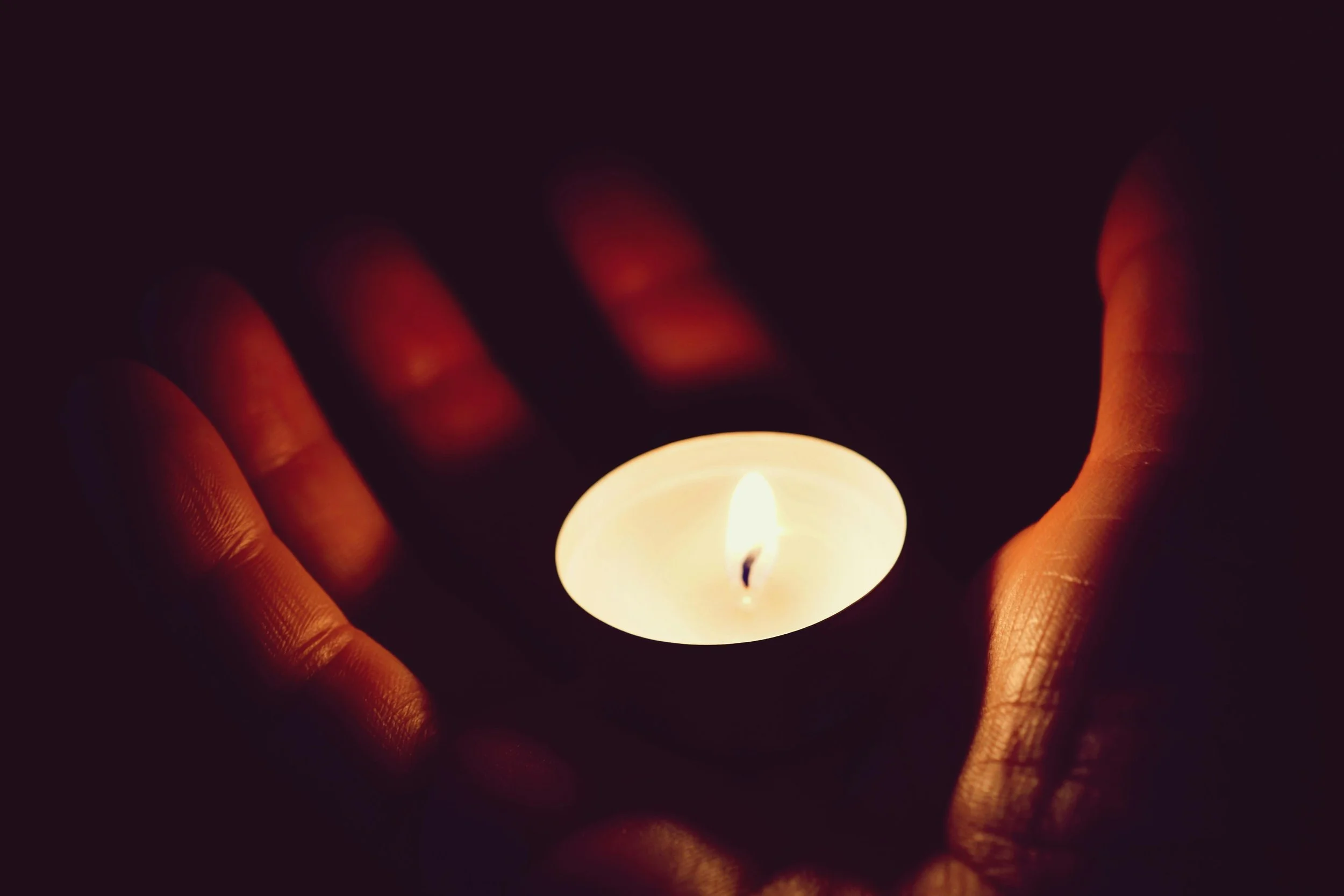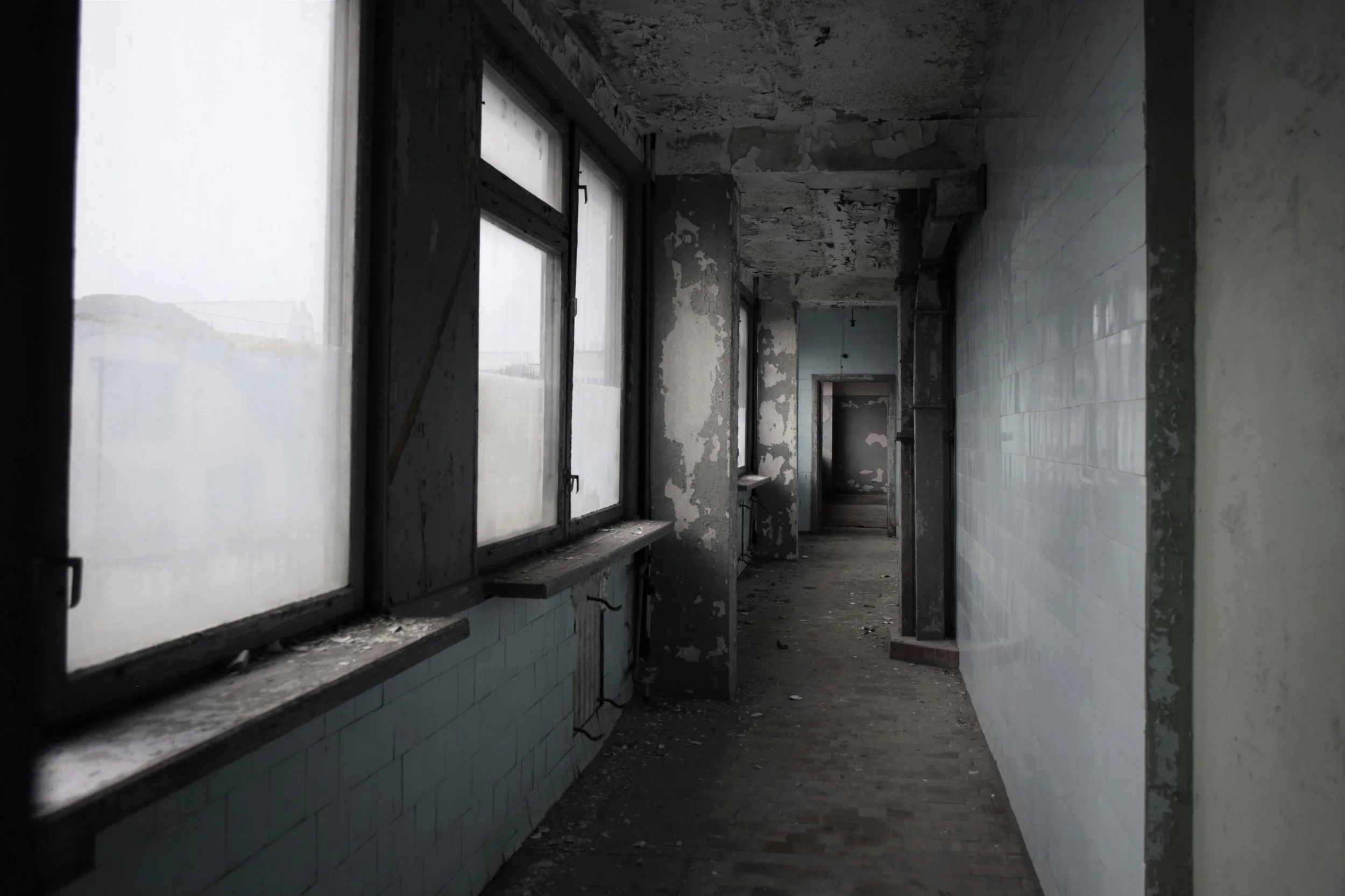The Body as Haunted House: What You’ve Locked Away is Still Living There
“Every locked room in the body still hums with what it remembers.”
TL;DR – The Heart of It:
The body remembers what the mind forgets — unprocessed emotions become “ghosts” that linger in muscle, breath, and nervous-system patterns.
Healing isn’t exorcism; it’s integration — meeting what’s stored with curiosity, pacing, and somatic ritual until it softens back into belonging.
In Santa Fe’s still desert light, Veluna Wellness offers a space to do this slowly — where bodywork becomes ceremony and the haunted becomes home.
Why call the body a haunted house?
It’s Halloween week in Santa Fe, and the metaphor writes itself: the body as a haunted house. Not in a gimmicky, spooky-for-clicks way, but in the deeply human sense of how we move through our days—passing through inner rooms with the lights off, hoping the cold spots (the tension, the sleepless 3 a.m. thoughts, the sudden catch in the throat) will fade if we just keep going. When something overwhelms us and we can’t complete the experience, we don’t release it—we store it. The nervous system is practical like that. Unprocessed emotion becomes a resident: a jaw that’s always tight, a breath that never drops, a shoulder that flinches before the mind catches up.
This isn’t about exorcising your pain or “cleansing” the body of ghosts. It’s about learning the architecture of yourself—meeting what’s still living there with pace, curiosity, and a bit of ritual. In this exploration, we’ll map the rooms where the body keeps memory, define what these “ghosts” actually are in somatic terms, and practice ways to turn on the lights without blowing a fuse. Over time, the house begins to feel less haunted—and more like home.
The Architecture of Memory: How the body becomes a house of rooms
If the body is a house, it has architecture—rooms that hold different chapters of our lives. Think of this less as pathology and more as somatic cartography: a way to navigate what your nervous system quietly saved for later.
The foyer holds your first impressions—the quick intake of air before a conversation, the instinct to brace (or soften) when someone steps too close. It’s where the body’s memory of “what usually happens next” greets you before your thoughts do.
The hallways are habits—shoulders inching up while you work, jaw tightening in traffic, the scroll-before-sleep ritual. These aren’t “bad,” just well-worn paths the body uses to conserve energy.
In the attic, rumination circles like moths around a bulb. Thoughts loop because something remains unfinished, and your breath often stays high and thin—as if you’re thinking with your ribs instead of your lungs.
And then there’s the cellar—the cool, quiet place where implicit memory lives: sensations, reflexes, emotional tones without words. A certain smell, a season, or a song can crack the door.
Why do some rooms get locked? Because doing so was intelligent once. Locking them kept life moving when your capacity was low. The work now isn’t demolition—it’s renovation. Adding light, airflow, and choice. The goal isn’t to empty the house but to inhabit it fully.
What counts as a ghost? Unprocessed emotions and the nervous system
When I say “ghost,” I’m talking about anything your system couldn’t fully process in the moment—so it stored the charge for later. These are the incomplete defensive responses, the bound tension, and the ungrieved losses that never found breath or ritual. They aren’t flaws; they’re intelligent placeholders.
You can recognize these “ghosts” through the body’s language:
Tissue and breath: a jaw that never unclenches, a chest that won’t fully drop, sighs that stop mid-exhale.
Reflexes: flinching before you register why.
Sensation shifts: numbness, fuzziness, or that “cottony” feeling where emotion used to be.
Mind loops: rumination, replaying old conversations, waking up wired at 3 a.m.
A quick nervous system primer helps: the sympathetic branch mobilizes for action (fight or flight), while the dorsal vagal state slows or shuts things down when overwhelm hits (freeze, fog, collapse). The ventral vagal state is where safety and connection live—curiosity, openness, easy breath. A haunting, then, is simply the body’s unfinished orientation to safety—your system still scanning the hallway, waiting to finish a story that once had no ending.
The point isn’t to evict these ghosts but to let them finish what they started. Sometimes that looks like a breath, a tremor, a tear, or finally saying something that was never said. That’s not exorcism—it’s integration.
“What you call a ghost might just be a feeling that never finished speaking.”
Why integration beats exorcism
When pain resurfaces, the instinct is often to “get it out.” But forcing emotions to leave can create backlash: re-triggering, rebound symptoms, or spiritual bypassing dressed up as transformation. The nervous system doesn’t release on command—it unwinds with permission, pacing, and context.
Think of integration as hospitality with boundaries. You’re not giving your house away to the past; you’re opening the door just enough to learn your guests’ names. Try this simple approach:
Name it. Describe what you feel in plain language—tight, buzzing, heavy.
Locate it. Point to where it lives—jaw, chest, belly.
Titrate it. Work in sips, not gulps—3 to 7 minutes, then reset your focus on something neutral (feel your feet, look around, sip water).
Over time, these “residents” start speaking in clear sentences. The jaw says, I’m guarding. The breath says, I need more space. The belly whispers, Not yet, but stay close. Integration doesn’t erase your history; it restores your authorship. The house remains yours—lights on, doors unlocked by choice rather than force.
Meeting the ghosts gently: how to work with the body safely
Working with the body requires consent—from your own system most of all. Think visit, not renovation. Short, contained sessions help your nervous system learn that this process is safe. Somatic therapists call this titration and pendulation—concepts explored by Peter Levine and supported by Stephen Porges’ polyvagal theory, which explains how safety and connection guide healing.
Here’s a simple framework for meeting what’s inside:
Set the frame (3–7 minutes). Choose a low-stakes “room”—a mild ache or subtle tightness, not your deepest grief. Sit or lie down with support behind you, eyes on a steady point.
Track like a naturalist, not a judge. Notice temperature, weight, texture, and movement. Use ordinary language—“warm spread,” “ropey line,” “marble under ribs.”
Know your stop signs. Pause if intensity rises above 6/10, if you hold your breath longer than two exhales, or if you feel far away or floaty.
Return to neutral. Name three colors in the room, feel both feet, take three longer exhales (four in, six out). Touch something textured to remind your skin you’re here.
This is the pace of integration—small, repeatable, kind. You’re teaching the house that light can return without short-circuiting the wiring, and that you always know the way back to the front door.
Touch and ritual as keys to the house
Ritual gives structure to safety. It tells the body, We’re safe enough to look. In the high desert pace of life in Santa Fe—where stillness and intensity coexist—ritual becomes how I remind my own system to slow down. It doesn’t have to be mystical or ornate; ritual is any intentional act that brings you back to the body.
1. Threshold ritual (about two minutes).
Stand at a doorway. One hand on your sternum, the other on your ribs. Eyes on one still point. Three longer exhales—four in, six out. Quietly name the “room” you’re entering: Jaw. Grief. Worry. That moment gives your body context—orientation before exploration.
2. Three-point touch.
Hands at the base of the skull for five breaths, then one at the diaphragm, then both on the lower belly. Each placement cues safety along the midline, shifting from sympathetic alertness toward ventral vagal calm.
3. Sound and light.
One candle, one hum, one chime. Repetition—not drama—teaches the body reliability. Rhythm steadies the vagus nerve like a metronome.
4. The pathway practice.
Walk slowly from your door to a chosen corner and back. Feel heel, arch, toes. Track micro-impulses to stretch, sigh, or yawn. Give each two breaths.
5. Close with reflection.
Write two lines: This room protects me by… and Today it asked for…
Small, consistent rituals restore coherence to the system. The goal isn’t to banish what’s there—it’s to let the house remember its rhythm, one quiet practice at a time.
“Ritual reminds the body it is safe enough to feel again.”
When the season stirs the shadows
Late October has a way of amplifying what’s under the surface. In Santa Fe’s thinner light and cool desert air, the body notices every shift. Circadian rhythms adjust, melatonin changes, moods ebb and flow. The air dries out; joints and skin speak louder. And then there are the anniversary reactions—moments when the body remembers something the mind might not. None of this means regression. It means responsiveness.
A few gentle seasonal adjustments help keep the house warm:
Wind down earlier. Dim lights an hour before bed—think “sunset indoors.”
Warm the breath. Extend the exhale (four in, six out) to cue safety.
Add texture. Cozy fabrics, warm mugs, weighted blankets—steady sensory anchors.
Simplify rituals. One candle, three breaths, one sentence in your journal.
Normalize the swell. If emotion rises, note the date or season and respond with micro-practice, not self-critique.
The body’s rhythms are seasonal too. When you meet them with attention instead of resistance, the house feels held instead of haunted.
Are your house rules actually armor?
Most of us live by quiet rules we never question—be productive, stay composed, keep it together, don’t need too much. They once kept life predictable. Now they might just keep it small.
Do a quick audit (no judgment, just data):
Do you only rest when everything’s done?
Do tears or anger feel unsafe or “unprofessional”?
Do you default to caretaking instead of being seen?
Do you soothe with scrolling, then feel more wired?
Do you call rest “lazy” when your body asks for stillness?
Then separate values from vigilance. Values are chosen and expansive (honesty, steadiness, devotion). Vigilance is rigid and fear-based (never stop, don’t need anyone, don’t make it awkward). If a rule shrinks your breath or narrows your choices, it’s likely armor.
Try trading one rigid rule for a living guideline:
“No rest until it’s perfect.” → “Pause when my breath shortens.”
“Don’t cry.” → “Name the feeling, find one anchor.”
“Always say yes.” → “If my jaw tightens, I ask for time.”
“Phone in bed.” → “Screens off at sunset; one candle, three longer exhales.”
Each small swap reopens a room. You start living with more warmth, less watchfulness—the way a house feels once it’s actually lived in.
“Armor once kept you safe. Now it only keeps the light from getting in.”
Knowing when to bring someone with you
Some rooms are best opened with company. Consider seeking professional support if you notice:
Flashbacks or panic that feels out of time with the present
Persistent numbness or dissociation you can’t shake
Sleep, work, or relationships repeatedly disrupted
Body symptoms that spike during emotional work
Safety concerns like self-harm or substance use
If you do reach out, look for practitioners who are trauma-informed, consent-forward, and scope-aware. They’ll explain what they’re doing, ask before touch, and welcome “no.” They’ll work in small doses, pause when needed, and refer when something falls outside their lane.
Think of co-regulation as borrowed steadiness, not dependence. A regulated presence expands your nervous system’s window of safety so you can process without overwhelm. You’re still the homeowner—the right companion simply holds the flashlight while you find the switch.
Turning a haunted house into a home
If the body is a house, then integration is the slow work of turning forgotten lights back on. A once-locked room begins to breathe again; floorboards stop creaking like warnings and start sounding like wood. Nothing flashy—just steadier rhythms, a jaw that no longer rushes to guard, a breath that knows how to land.
The question shifts from What’s wrong with me? to What here needs care? That reframe changes everything. It turns somatic ritual into daily practice—three longer exhales, a hand to the sternum, a quiet note in the journal. It keeps healing grounded, human, and sustainable.
This season, if the shadows feel close, let that be context—not a verdict. Choose smaller, slower rituals of embodiment, and let the house remember itself a few minutes at a time. Doors open not because you force them, but because you stand there with light in your hand—patient enough for each room to come back to you.
If this kind of work speaks to you—body as story, ritual as healing—I’ll soon be opening my studio in Santa Fe. Veluna Wellness begins seeing clients after October 31.
You can join the early-access waitlist now to be the first to book sessions once the schedule opens. Think of it as finding your place in line at the threshold—so when the doors officially open, your space is already waiting.




